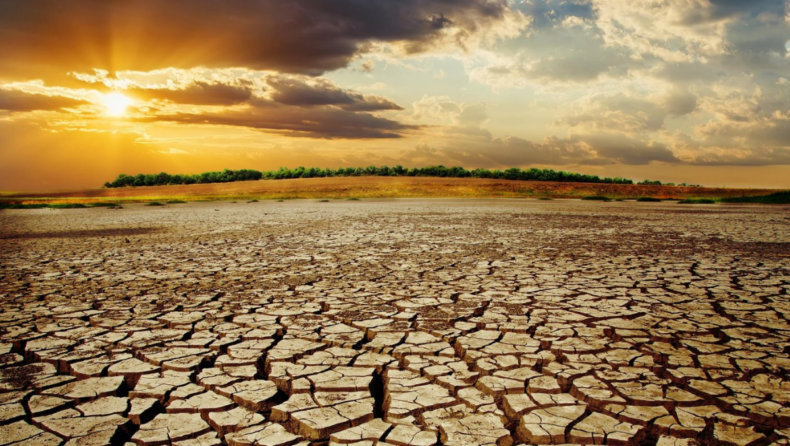The planet’s warming has overlapped with Afghanistan’s political and economic turmoil. The former Afghan government and the UN predict dramatic temperature rises of nearly 6 degrees Celsius if global carbon emissions are left uncontrolled in the next decades.
Afghanistan, now one of the world’s poorest nations, is now even less prepared to face the problems of global warming and less rainfall. The Taliban’s takeover, coupled with the drought and rising wheat prices due to Russia’s war with Ukraine, has left 10 million Afghans facing hunger.
City dwellers are now as vulnerable to famine as rural inhabitants who depend on local crops for money and subsistence, according to the Afghan Analysts Network in Kabul. “The overriding factors are the drought and the economic crisis,” said Mary Ellen McGroarty, country director for the UN World Food Program in Kabul. “They’re basically removing natural domestic coping strategies.”
The struggle is not limited to rural families. Sayed Ehsan taught at Balkh’s capital, Mazar-i-Sharif. He bought a cab when the Taliban closed his school for months. Now, his income is Around $100/month. He and his wife often go hungry.
The typical local cuisine is often replaced with bread and green tea. “There is no other choice,” according to him. Ehsan claims he’s heard of individuals selling their baby girls for 15,000 to 20,000 afghanis ($170). And that explains why the country’s food situation is so serious.
Poor soil moisture and rainfall in Rahimi’s hamlet of Qarchi Gak foretell a poor harvest, according to Andy Hoell, a research meteorologist at the National Oceanic and Atmospheric Administration’s physical-sciences laboratory. Snow and rain will help Afghanistan recover from the drought of 2021, which was caused by enormous water loss from the adjacent Hindu Kush mountains.
The Pacific Ocean’s La Nia weather pattern may prolong the drought until the end of the year. Extreme weather events are raising the danger of water scarcity in rural regions, according to the World Meteorological Organization.
Last year’s La Nia came at the worst possible time. Warmer weather intensified as the Taliban advanced and US soldiers began to depart, according to the Famine Early Warning Systems Network, a US-backed website that offers statistics on food-insecure countries. Following a 20-year battle, the hardline Islamist organization came to power in August 2021.
Afghan wheat crop plummeted 30% last year, according to Mohammad Assem Mayar, a guest contributor on climate change for the Afghan Analysts Network. Mayar and other scientists expect the 2021 drought to continue this year as rainfall falls below normal.
“Wheat is the lifeblood of Afghanistan,” stated UN FAO envoy Richard Trenchard. Crops occupy almost 70% of cropland, much of which is dry. The World Food Program’s McGroarty encouraged the US and other nations placing sanctions on Afghanistan’s economy to keep food supplies flowing.
However, the recent move to take half of the Central Bank of Afghanistan’s assets to pay 9/11 victims has sparked widespread criticism. With little evidence of policy change, the weather may decide who eats this year. “We’re all watching the snow. That’ll be crucial “he stated
People have migrated to cities or across borders in Afghanistan. Those who come in cities typically rely on handouts from the WFP. Many markets in Kabul and Afghanistan sell food, but few can afford it. The World Food Programme (WFP) says acute malnutrition is rising in 25 of the country’s 34 provinces.
Ghulam Qader, a merchant in Kabul. He can sell some food by cutting prices, but the leftovers rot or are thrown away. Only two or three customers every day, compared to fifteen last year as the prices have increased by 50% Mahmood Siddiqi, 42, worked at a Kabul private university as an economics instructor, till was it closed as Taliban banned females to attend it.
He had to sell his TV, computer, and smartphone to aid his family till the WFP arrived. Months well before Taliban gained power, the old administration announced plans to build 44 dams to promote agriculture. Some of such projects, as well as others linked to water and irrigation, may be abandoned.
But now the Taliban claims that the “largest ever canal project” to irrigate over 580,000 hectares of agriculture in Afghanistan’s north has already begun. Regardless of the project’s outcome, Mayar says the regime must properly manage water resources to ensure food security in the future. The country’s water storage capacity is presently 10 times that of its Neighbours, according to Mayar.
The international community’s attitude to the Taliban is critical, as the US, EU, and most of its allies consider them terrorists. Washington has indicated it will provide $3.5 billion to humanitarian agencies like the UN.
According to McGroarty, the WFP is currently short roughly $1.9 billion of the $2.6 billion required this year to feed 23 million people. Her team has decreased daily food baskets to 50% of the customary 2,100 calories per individual. In order to preserve lives and provide succor and comfort to those fleeing the winter, McGroarty hopes that his organization can act quickly enough.
Published By : Ankit Singh
Edited By : Khushi Thakur













